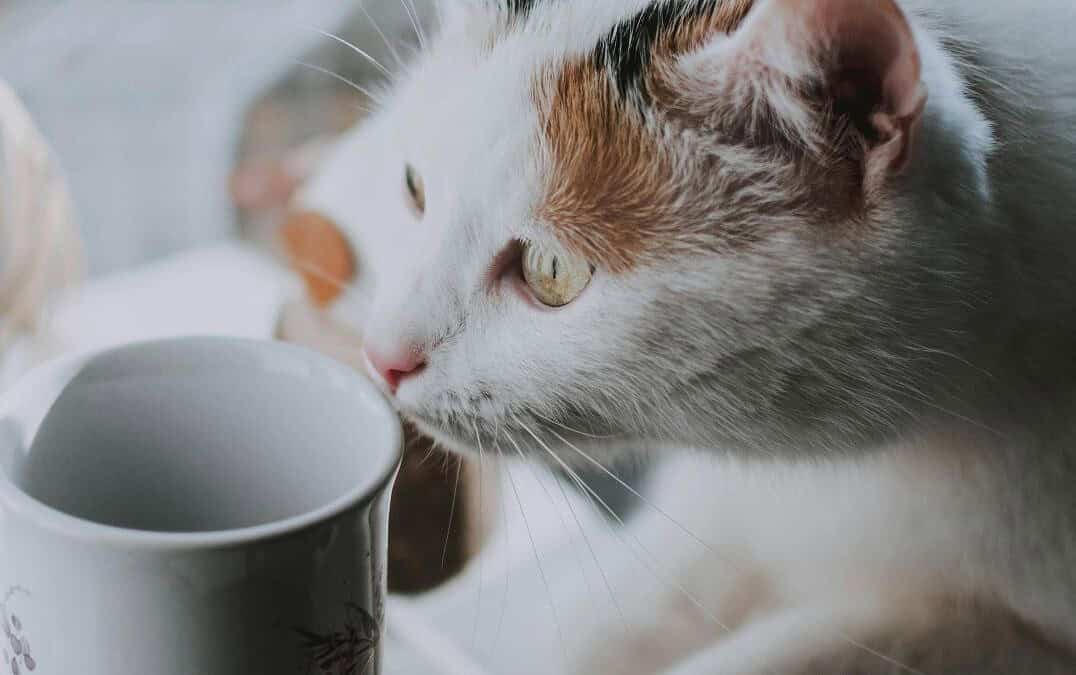You set down your water glass. Your cat stares at it with the intensity of a scientist about to prove a hypothesis. One slow paw swipe later—gravity wins.
It may look like chaos, but cats usually have clear reasons for batting your belongings to the floor. From instinct to curiosity (and maybe a little “look at me” energy), here are the five main drivers of this classic cat move—and how to redirect it.
1. Instinct: Why Cats Knock Things Off Tables
Even the most pampered housecat still carries the instincts of a hunter. In the wild, cats use their paws to test potential prey—batting it to see if it’s alive, stunned, or safe to pounce on.
That same motion is at work when your cat swats at a pen, remote, or water bottle. It’s practice. It triggers their hunting reflexes and rewards them with movement and stimulation.
To your cat, knocking over a pen isn’t mischief—it’s simulated survival training.
This is especially common in kittens or indoor cats who have fewer outlets for natural behavior. What looks like chaos to you is controlled curiosity to them.
Redirect the Hunting Instinct:
Since this behavior is rooted in predatory play, mimic the hunt. Use wand toys, feather teasers, or balls that skitter across the floor to simulate prey. A 10-minute chase twice a day gives them the thrill of the hunt—without sacrificing your favorite mug.
2. Attention-Seeking Behavior in Cats
Cats are quick learners. They discover that certain actions—like pushing your phone off the table—lead to an immediate reaction.
Whether it’s yelling, eye contact, or scrambling to grab an object before it falls, your response reinforces the behavior.
This tactic is especially common in:
- Single-cat households
- High-energy or intelligent breeds
- Cats lacking structured daily play
Knocking things over isn’t always mischief—it can also be a request: “Look at me.”
The more dramatic your reaction, the more likely your cat will repeat the behavior. Even a scolding is still attention.
How to Shift the Spotlight:
Ignore the crash itself (as tough as it is) and respond only when your cat channels that energy into something positive. Keep a toy handy to redirect them, then reward the play session with praise or a treat. Over time, they’ll learn that toys—not pens or earbuds—get your attention.
3. Curiosity Needs an Outlet
Cats are natural scientists. They test their world through motion, touch, and interaction. That snack bowl wobbling on the edge? To them, it’s not a spill risk—it’s a gravity experiment.
Different objects give different “results”:
- A spoon spins.
- A bottle cap bounces.
- A ceramic mug? Loud, dramatic, and worthy of an encore.
According to The Ohio State University’s Indoor Pet Initiative, exploratory play is essential for a cat’s mental health. Without enough stimulation, indoor cats are more prone to stress-related issues—scratching, overeating, or yes, sending your phone flying across the room.
In short: your coffee table is their lab, and your belongings are the experiments.
Keep Curiosity Satisfied:
Cats thrive on novelty. Rotate toys, swap out cardboard boxes, or rearrange their climbing spots weekly. Even a paper bag on the floor can be a new adventure. By refreshing their environment, you turn their curiosity away from the coffee table and into safe exploration.
4. Boredom and Energy: Environmental Triggers
Cats don’t swat things off tables just to annoy you—they often do it because they have energy to burn and nowhere to put it. Indoor cats especially need outlets that mimic the mental and physical challenge of hunting.
Smart Strategies to Burn Energy:
- Puzzle Feeders: Turn mealtime into an activity by making them “work” for food. This slows eating and keeps their mind engaged.
- Scheduled Play: Two or three short, high-energy sessions with toys that dart or fly mimic the stalk–pounce–catch sequence cats crave.
- Environmental Variety: Add vertical space like cat trees or shelves. A change in climbing options can be just as effective as new toys.
- Positive Reinforcement: Praise or treat them when they use their toys instead of your belongings. Cats repeat behaviors that get rewarded.
5. Favorite Targets Cats Can’t Resist
Not all swats are random. Many cats develop “favorite victims”—keys, notebooks, knickknacks. If it makes a noise or gets a reaction, it’s fair game.
Behavioral studies show cats repeat behaviors that deliver consistent feedback. Knocking over the same object at the same time each day often becomes part of their routine.
Break the Habit Loop:
If your cat has a favorite object to swat—like your morning coffee cup at 7:03 a.m—change the setup. Move or remove the item, or replace it with something safe they can interact with, like a ping pong ball or lightweight toy on a low shelf. Offering an acceptable “knock-over” option can redirect the urge without frustration.
Common Questions Cat Owners Ask
Why does my cat knock over my water glass?
Because it’s fun. Glasses wobble, splash, and make a satisfying crash—what more could a curious cat want? This isn’t random chaos; it’s a combo of play, instinct, and attention-getting. That water glass is their personal science experiment.
How do I stop my cat from pushing things off shelves?
Redirect the behavior, don’t scold it. Give your cat more interesting options: wand toys, puzzle feeders, or even a designated “knockable” item on a low shelf. If they’re swatting because they’re bored or craving interaction, filling that need works better than fighting it.
Do cats knock things over on purpose?
Sort of! It may not be evil genius territory, but cats absolutely notice your reaction. If pushing your keys gets a laugh (or a gasp), they’re likely to do it again. It’s part curiosity, part strategy—and 100% cat.
How to Stop Cats from Knocking Things Off Tables
At the end of the day, your cat isn’t being bad—they’re just being a cat.
They’re curious, clever, and sometimes crave your attention in less-than-helpful ways.
Now that you understand why cats push things off tables—and what they’re trying to tell you—you can redirect the behavior instead of battling it.
Your next step? Rotate their toys, reward better choices, and give them new ways to explore their world (without sacrificing your glassware).
Final Takeaways:
- Encourage hunting play with wand toys or feather teasers
- Rotate toys and environments to keep curiosity fresh
- Use puzzle feeders and daily play sessions to reduce boredom
- Remove tempting targets and reward them for playful choices
👉 Join the fun: Share your cat’s favorite “knock-over” object with #KnockItOffChallenge—we’d love to feature your story.









